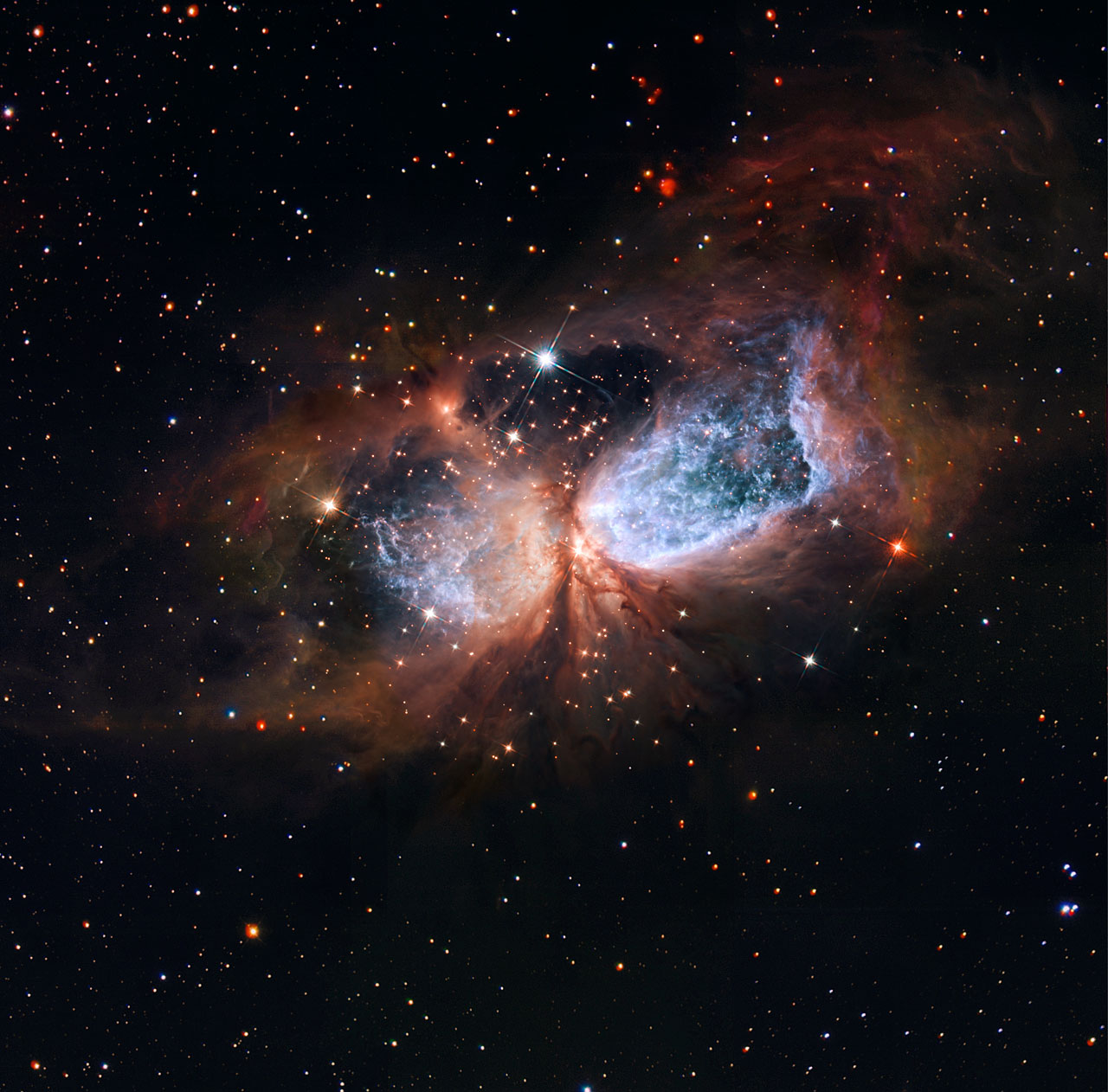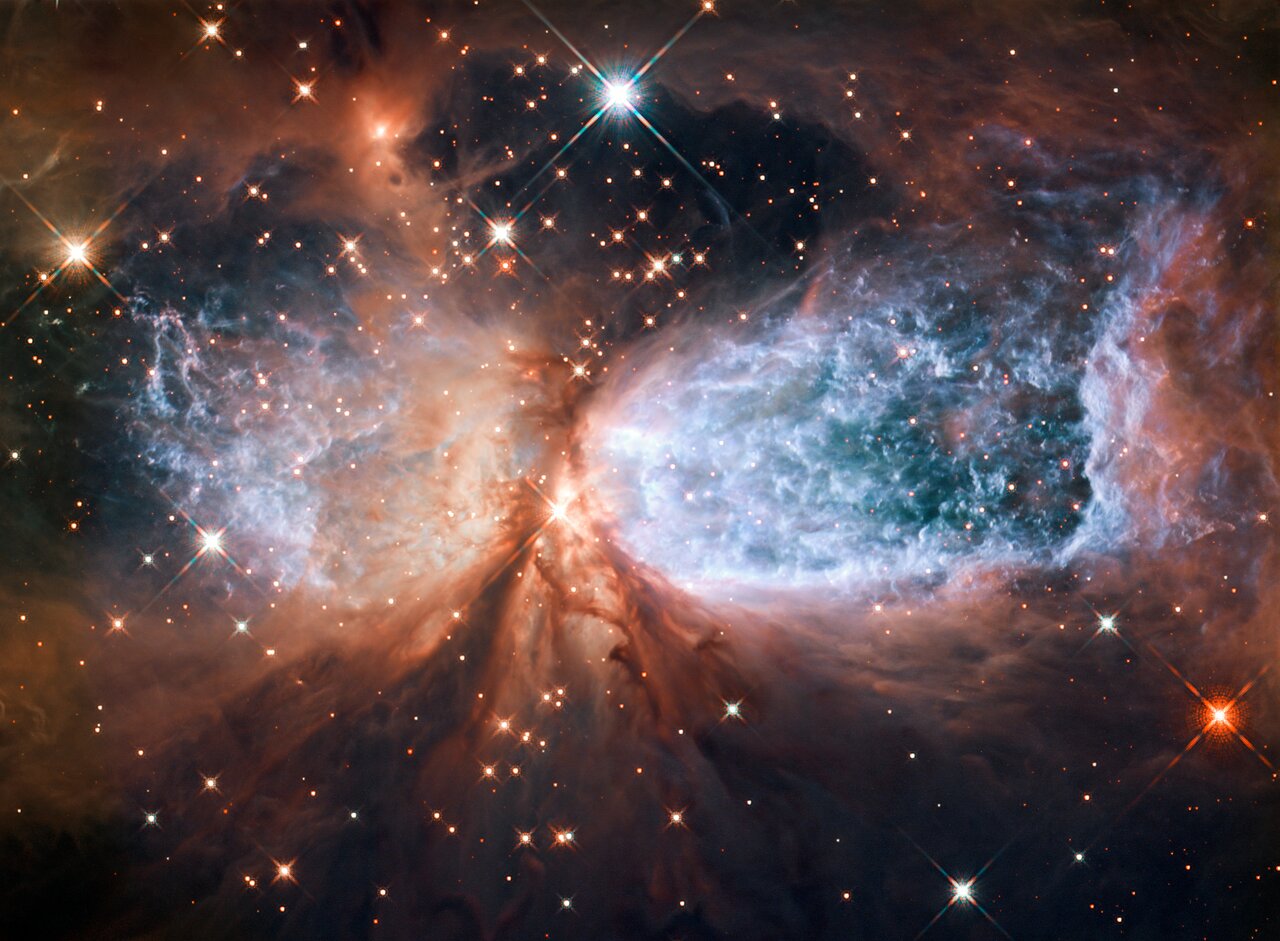Its that time of year again when we have a look back at all the wondrous astronomical images that have been released over the past twelve months and pick our favourites.
Obviously there are going to be some differences in opinions with some of our readers feeling like their favourite image of the year has been robbed of the top spot. Whilst we would love to feature every image, clearly that is neither practical and somewhat defeats the purpose of having a competition to pick the best. Though if you have a differing opinion we would love to hear about it, either in the comments section of the post, on our Facebook page or via our forum, but without further ado lets begin!
Best Image From Within the Solar System
This year’s winner is: - Ulyxis Rupes as observed by the ESA’s Mars Express
Ulyxis Rupes is a region near the Martian south pole (though the south pole itself is a little over 1000km further south). The poles of Mars are dynamic areas of the Red Planet constantly changing along with the Martian seasons. The image shows an ice field along with delicate sand dunes and numerous other interesting features.
This image was taken during the Southern Hemisphere’s Spring with the region slowly warming and the ice thinning. This warming, along with its distance from the south pole itself means the ice is rather thin, at just 500m deep compared to some other polar regions where it can reach 3.5km.
The image was taken by the ESA Mars Express’ High Resolution Stereo Camera. The Mars Express has been in orbit of Mars for 8 and a half years and continues its work of studying the Planet and mapping it in extraordinary detail.
You can read more about this image here
Best Image From Within Our Galaxy – Runner Up
Our runner up in this category is IC 2944 – The Running Chicken Nebula
IC 2944 is an emission nebula glowing from the harsh bombardment of the ultraviolet light produced by the hot young stars that have been birthed by the nebula’s dusty clouds.
It is located around 6500 light years from Earth in the direction of the constellation Centaurus - The Centaur.
The red glow indicates the familiar presence of excited hydrogen, a feature common in and around such star forming emission nebulae. Star formation is evidenced further by the presence of Bok Globules – the dark black objects in the image particularly concentrated in the top right corner around the cluster of bright blue stars. These are small dense regions of gas and dust that are collapsing to form the next generation of stars.
Unfortunately, such beautiful emission nebulae are short lived in astronomical terms, lasting just a few million years before their gas has either been used to forge stars or blown out from the area by fierce stellar winds. The most massive of stars will burn out in flashes as they rapidly chew through their supply of hydrogen briefly lighting up the area again as a supernova and glowing remnant.
The image was produced using data from the Wide Field Imager on the MPG/ESO 2.2-metre telescope at ESO’s La Silla Observatory.
You can read more here.
Best Image From Within Our Galaxy
Our winner in this category is the glorious star forming region S106
The nebula is located within the constellation Cygnus – The Swan – at a distance of about 2000 light years from Earth.
The fantastic bubbles of material, with the intricate ripples of gas and dust within the surrounding nebula are caused by the young star S106 IR.
This stellar youngster is undergoing the final stages of its formation process – sucking up material from the surrounding area. Despite still undergoing its formation, S106 IR is already 15 times the mass of our of Sun.
Rather like someone whose eyes are too big for their belly, this young star is firing some of this material back off into space accompanied by large amounts of radiation that is shocking and exciting the nebula making it glow brightly.
The blue regions of emission in this image are the result of superheated hydrogen glowing at about 10,000 degrees. The cloud is only two light years across at its widest point making it a small stellar nursery (the much more famous Orion nebula is 24 light years across).
S106 is located in the direction of the constellation Cygnus and is around 1900 light years away from where you are sitting.
The image was produced from data collected by Hubble’s Wide Field Camera 3.
You can see a wider view of the entire nebula below -

S106 - Hubble and Subaru Composite Credit: NASA, ESA, the Hubble Heritage Team (STScI/AURA) and NAOJ
You can read more about the images here
Best Extragalactic Image – Runner Up
Our runner up in this category is this ESO image of the Leo Triplet

The Leo Triplet Credit: ESO/INAF-VST/OmegaCAM. Acknowledgement: OmegaCen/Astro-WISE/Kapteyn Institute
At around 35 million light years from Earth, in the direction of, you guessed it, Leo – The Lion. Such a distance my seem large though it is a stone’s throw on terms of the universe.
All three members of the Triplet (sometimes called the M66 group) are in fact spiral galaxies not dissimilar to our own Milky Way. They each appear so different as they are visible to us from different angles. NGC 3628 is seen edge on at the left of the image whereas M 65 (in the top right hand corner) and M66 (in the bottom right) are closer to being face on and so allow us to peer at their spiral structures unhindered.
The image also contains many other galaxies that lie much further away from us. Along with many stars that lie within our own Milky Way as well as a few asteroid streaks produced by small objects in our Solar System.
The image was produced by the ESO using the Very Large Telescope’s Telescope for Surveys (try say that ten times quickly), mercifully abbreviated to VST.
It was snapped as part of a survey designed to find illusive small objects, such as Brown Dwarfs and Black Holes within the Milky Way’s halo, objects normally to small and dim to be picked out but can be identified through gravitational microlensing. It will also peer deep into the universe to help expand our knowledge of the illusive dark matter.
You can read more here
We will be seeing the winner of the extragalactic section later, but now we move on to our amateur section,
Milly took this image of an ISS pass during the STS-131 shuttle mission with her dad’s Canon EOS10D on the 26th of February 2011.
A lovely shot once again illustrating that you don’t need thousands of pounds worth of equipment to take beautiful astrophotographs.
The ISS is the largest inhabited space station ever produced by humanity. It has been occupied continuously for over 11 years.
It zips around the planet every 91 minutes at an altitude of about 380 km.
Best Amateur Astrophotograph
The best amateur astrophotograph of this year is this fantastic image of the Andromeda Galaxy by Nick Howes.
The Andromeda galaxy or M31, is the largest galaxy in our Local Group. Andromeda is a spiral galaxy similar to the Milky Way, it is located about 2.5 million light years from Earth in the direction of the constellation that shares its name.
Andromeda and the Milky Way are on a collision course and will collide in a few billion years producing a larger elliptical after many million years of gravitational distortions.
The Andromeda galaxy is the furtherest object that can be reliably observed with the naked eye. In dark skies, away from city lights it appears as a milky patch against the black of the sky.
Best Extragalactic Image and Overall 2011 Winner
This year’s best extragalactic image, and the overall winner of this year’s competition is this magnificent Hubble image of Arp 273 -
Arp 273 is a pair of interacting spiral galaxies, the larger upper one on its own is UGC 1810 with the smaller lower member of the pair called UGC 1813. The pair lie 340 million light years away from us in the direction of the constellation Andromeda – The Princess.
The smaller UGC 1813 is believed to have passed through the larger galaxy, off to one side twisting the larger galaxy into a shape resembling the head of a flowering rose – as evidenced by the off centre ring structure in UGC 1810.
The smaller galaxy has only 20% the mass of the larger, though the interaction has caused the larger’s spiral arms to unfurl and for a stellar bridge of material to be thrown out thousands of light years into the void between the two.
Interactions like these generally cause starbursts to occur in both galaxies with the smaller experiencing a burst first and after a short delay a starburst is also set up in the larger galaxy. This is thought to be due to the different quantities of interstellar gas within high and low mass galaxies. In general, low mass galaxies have more gas and dust not bound into stars than high mass galaxies so it is easier for a low mass galaxy to form stars than a high mass galaxy.
A smaller third spiral can also be seen within the arms of UGC 1810. Astronomers have noted that the spiral arm changes from being ordered and reddish - indicating lots of middle age and old stars – on one side of the small spiral to being blue and clumpy on the other – indicating large numbers or recently formed high mass stars.
The image was taken using Hubble’s Wide Field Camera 3 on December 17th 2010 and had a total exposure time of 5.9 hours.
Hubble is a joint project between NASA and the ESA.
You can read more here.
That’s it for this year’s competition folks I hope you enjoyed the images for this year, and only one thing remains:






